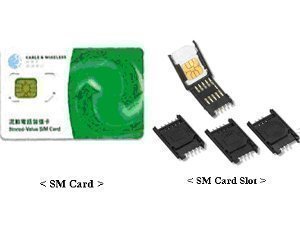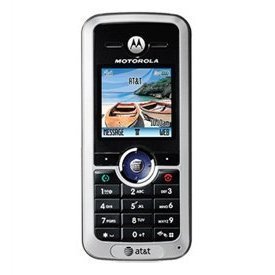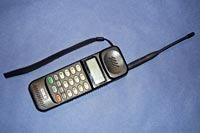Before GPS started being deployed in the majority of mobile devices sold on the market, the only method available to track a cell phone was triangulating the cell phone’s position using one of several techniques available to law enforcement and other governmental agencies. Today, most cell phone tracking applications work by accessing the GPS location of the cell phone and providing feedback to the end-user in the form of an app or software program. In order to understand how cell phone tracking works, it becomes necessary to look at each major model of cell phone and the available options for locating the desired mobile phone.
What is GPS?
GPS (Global Positioning System) is the U.S. satellite-based navigation system that uses a network of 24 satellites to provide 3-D locating data to GPS receivers on Earth. The satellites are maintained by the United States Department of Defense (DoD) and were originally deployed for military applications only. In the 1980s, the U.S. Government made the decision to allow the system to be used by civilians, and has since lifted restrictions previously placed on civilian GPS accuracy. Today, GPS is available for anyone to use and works in all weather conditions, 24 hours a day. More importantly, there are no setup charges or subscription fees required to use GPS.
How Does GPS Work?
All 24 GPS satellites circle the planet twice a day in a very specific orbit. During their travels, the satellite sends signal information to Earth. A GPS receiver receives the information from all available satellites and calculates the GPS receiver’s exact location by comparing the time that a signal was transmitted by the satellite to the time the receiver receives the signal. This provides the distance that the satellite is from the receiver. By using this difference from several satellites, the GPS receiver is able to determine the receiver’s position with a high degree of accuracy and display on a map or chart. In order to provide an accurate 2D position consisting of latitude and longitude (and to track movement), GPS receivers require at least three GPS satellites signals to be received. If there are four or more satellites in view, then the 3D position of the GPS receiving unit (latitude, longitude, and altitude) can be determined.
How Accurate is GPS?
Due to the multi-channel design of today’s GPS receivers, the majority of models are very accurate (most to within 15 meters or better of accuracy). Some atmospheric facts can influence the accuracy of a GPS device, so when attempting to use a cell phone tracking application based on GPS, the locating data may be off as far as 50 feet from the exact location of the phone (a bigger deal for those who have misplaced a cell phone in their home as compared to trying to find out the geographic location of a phone).
![]()
Although better locating data is available with DGPS (Differential GPS) (accuracy to within three to five meters), this capability has not been incorporated into the majority of cell phones at the time of this writing.
How Does the GPS Satellite System Work?
The 24 GPS satellites orbit the Earth at a distance of approximately 12,000 miles above the planet’s surface. They travel at speeds of approximately 7,000 miles per hour and are powered by solar energy. Each satellite has a battery backup onboard to guard against solar eclipses, and there are also small rocket boosters onboard to help correct the orbital path when required. The first GPS satellite was launched in 1978, and the United States was able to achieve the full constellation of satellites in 1994. Each device is designed to last approximately 10 years (replacements are launched as required), with each satellite weighing approximately 2,000 pounds.
How Does the GPS Signal Work?
There are two low power radio signals transmitted by GPS satellites that are designated L1 and L2. The L1 signal is transmitted at 1575.42 MHz (UHF) and is designed for civilian use. Since the signal travels via line of sight, it will penetrate glass, clouds, and plastic, but will be stopped by most solid objects. The three pieces of information contained within the signal include almanac data, ephemeris information, and a pseudorandom code. The code contains an ID for the satellite transmitting the information. The ephemeris information includes the current date and time, whether or not the satellite is operating properly, and most importantly is the portion of the GPS signal used to ascertain a position. The almanac data portion of the signal informs the receiver as to the expected location of the satellite throughout the day. Every GPS satellite sends almanac data that indicates the orbital information for both that satellite as well as the others in the constellation.
What Factors Degrade the GPS Accuracy of Cell Phones?
Before getting into detail on the various GPS tracking applications for cell phones, it’s first worth reviewing some of the factors that can degrade the signal accuracy throwing off the location of the phone. These include ionosphere delays, signal multipath, receiver clock errors, orbital errors, number of satellites visible to the phone, and intentional degradation of the signal.
Atmospheric Delays – The GPS satellite signal is slowed as it travels through the Earth’s atmosphere (both the Ionosphere and troposphere). Although the GPS system makes use of a built-in scientific model which incorporates an average amount of delay to correct for the error, there can still be measurable error if there is an unusual amount of atmospheric delay at work.
GPS Signal Multipath – When the GPS signal is reflected off of large mountains or tall buildings, the travel time of the signal is delayed. This effect will result in errors being introduced into the GPS signal accuracy and can introduce an error into the locating information provided by cell phone tracking apps.
GPS Receiver Clock Errors – The built-in clock for a GPS receiver (or on a cell phone) is not designed to be as accurate as the atomic clocks used by the satellites. Although this error is not as significant as other types, it can add an additional error factor which results in GPS accuracy being thrown off.
Total Number of GPS Satellites Visible – The more GPS satellite signals visible to a GPS signal, the more accurate that the positioning data will be. If less than two satellites are visible to the receiver, then it will not be capable of providing accurate locating information.
Intentional Degradation of the GPS Signal – Although not currently employed (turned off in May of 2000), the U.S. Department of Defense maintains the capability to impose intentional degradation of the GPS signal. This capability is also referred to as Selective Availability (SA).
How is GPS used to Track a Cell Phone?
Most modern cell phones come with a built-in GPS receiver in the phone. This receiver works similarly to other commercial-grade GPS receivers, in that it uses the difference in time of transmission and receipt of the GSP signal from a satellite to determine the distance to the satellite from the phone. If two satellites are visible by the phone, then a 2D position can be calculated. The greater the number of satellites visible to the phone, the more accurate the position will be. As a result, if the location services of a phone are turned on, the cell phone will be calculating the device’s position in near real time or real-time depending on the phone.
Since most phones “know” where they are located at any given time of day, half of the task of tracking a cell phone is complete. The next task for GPS tracking applications is to communicate this location to a remote software program or application. Depending on the model of phone, this task is accomplished through transmission over WiFi, SMS text, or via a data connection over the traditional wireless signal. As a result, if a GPS-equipped phone is turned on, it can be located through the use of GPS.
Popular Cell Phone Tracking Applications
Depending on the model of phone in use, there are a number of options available to track a cell phone. All of the major models of smart phone on the market today include a capability to perform this task to include iPhone, Android, and the Windows phones.
How to Track an iPhone
Unfortunately, as iPhones have become more popular, it has become more and more common for consumers to lose the device. Luckily, if an iPhone user has an Apple ID, the lost iPHone can be tracked through any Internet Browser if location tracking is enabled on the device. This capability is on by default when an iDevice is associated with an Apple ID.
Step 1 – Install the “Find My iPhone” app on one of your alternative Apple devices. The app can be installed via the Apple App Store or directly from the Apple iCloud website.
Step 2 – Input the Apple ID and password associated with the lost iPhone. This is mandatory for use of the service.
Step 3 – Launch the “Find My iPhone” app.
Step 4 – Select the “Devices” menu button to display a listing of all of the devices attached to the Apple ID.
Step 5 – Choose the iPhone or other Apple device that is missing from listing.
Step 6 – View the location of the missing iPhone on the subsequently displayed map. If the iPhone has been turned off or the battery of the device is dead, the map will display the last known location of the phone.
How to Track an Android Cell Phone
Similar to the iPhone, Android includes a capability to track the cell phone using GPS technology. If an Android phone has a Google account attached to the device, then the phone can be tracked using the Android Device Manager.
Step 1 – Launch the Web browser on any computer that is connected to the Internet, and login to your Google account.
Step 2 – Open the Android Device manager and a map will launch displaying the location of the Android Phone.
Step 3 – View the display in the upper, left-hand side of the screen that will show the last time the phone was located in addition to other relevant information about the phone.
How to Track a Windows Phone
Similar to other major cell phone providers, a Windows phone can be tracked if it has been associated with a Microsoft Account via the web interface located at the Windows Phone website.
Step 1 – Open the Windows Phone website on a computer connected to the Internet and login to your Microsoft account.
Step 2 – Choose the “Find My Phone” menu option on the subsequently displayed screen.
Step 3 – View the map displayed to indicates the last known position of the Windows phone.
How to Track another Person’s Cell Phone?
First, ensure you are not breaking the law for your home country if attempting to track another person’s cell phone. In most countries, this act is illegal if tracking someone’s phone without their permission. That being said, most major service providers in the United States provide a location service that let one track all of the cell phones on the same plan. The most common use of this functionality is to track the location of children who are on a family plan. At the time of this writing, the following are the family location services and rough pricing for this type of plan in the United States:
AT&T – AT&T Provides the FamilyMap service for approximately $9.99 per month at the time of this writing. The service is capable of displaying the family member’s location on a map or can send the locating data via SMS text or email.
Sprint – The Spring Family Locator is available for approximately $5 per month. The service can be accessed via mobile device or web browser and also offers the ability to set alerts if the target device doesn’t arrive in the home or other pre-designated location by an expected time.
T-Mobile – The T-Mobile FamilyWhere service is available for approximately $10 per month. In addition to providing real-time location services, the FamilyWhere service also allows account holders to view a seven day history of location data for each device as well as providing the ability to set alerts on each device.
Verizon – The Verizon Family Locator service is available for $10 per month. The service works with any web-enabled Verizon phone and provides the capability to track any phone on the Verizon account. Similar to other major service providers, the Verizon Family Locator can be setup to send an alert if a phone has not arrived at a pre-programmed location by a set time. The service is not available at the time of this writing for pre-paid accounts.
How to Track a Cell Phone using Third Party Apps
Another option for tracking a cell phone is to use a third party application. Once installed, the application works similar to the major service provider applications by leveraging the installed GPS technology on the targeted phone. The following are a few of the popular third party applications available to track cell phones on the market today:
Stealth Genie
Stealth Genie is one of the popular commercial applications available on the market today for parents to use to both track a smart phone that is GPS-enabled, as well as other cell phone usage by the user of the targeted phone. The software can be installed on any Android, Blackberry, or iPhone, and is capable of advanced functionality such as recording the surroundings of the user and monitoring both Skype and SMS text conversations. Users should make sure that they are aware of the local rules and laws governing monitoring activity before purchasing and deploying the Stealth Genie app on even a child’s phone since the use of the program could be deemed illegal in many locales.
Phone Sheriff
Similar to Stealth Genie, Phone Sheriff is a commercial cell phone tracking application that is designed for either parental or business use. In addition to providing locating data, the software package also provides the capability to block phone numbers, monitor text messages, and view all other information located on the targeted phone. Phone Sheriff is available for use on Android, Blackberry, Apple, Windows, and Symbian OS devices; however, the locating data on the Verizon network is not guaranteed to work.




DM Lee
I am still not 100% sure on how this works. What I do know is we have that tracking and when I am at work it says I am somewhere else. Explain that. Please explain that.
Roomi
very informative article 🙂
Alex Baschoff
I am a school teacher wrongly committed of a crime 3 years ago and have been harrassed by several law enforcement agencies, including several cloned cell phones. I would like to speak to you about this after how informative I found your article to be. Thanks and hope to hear from you. Alex Baschoff
jeetu
maderchodo chodu banate ho.aisa koi site nai h jisme trece ho ske
ganduo
Roger
please trackin this number of celular for me. 55 11 75756183
Patty
Hello, I was checking your website out today and I really like it. I have some websites about cell phones. Mostly they are about cell phone tracking software but I cover other things on them as well. I would like to know if you would be interested in allowing me to write an article for your website. I could provide you with a high quality 400 word article. In exchange I would ask for a link from the article and one from your blogroll (if that’s at all possible).
You would get a free high quality article for your website and I would get some help moving my sites up in the SERPS from the link. This could be a win/win for both of us.
If you’re not interested in a guest submission article, maybe you would be interested in working out a link trade. I have a few sites in the cell phone niche so we could work our a three way trade that could really help us both!
Let me know if this is something that might be of interest to you.
Best Regards,
Patty
neomax
I’ve heard of that Sprint can use WiFi to track its users as well, actually they use a combination ot technology to locate cell phones, which provide a more accurate location of its end users.
Cheers,
Max